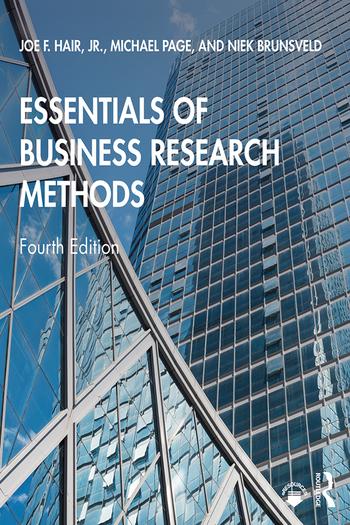Answered step by step
Verified Expert Solution
Question
1 Approved Answer
QUESTION 1 (28 Marks) 1.1 Differentiate between efferent and afferent neurons, and explain the function of each. (14 marks) 1.2 Neurons are held together




QUESTION 1 (28 Marks) 1.1 Differentiate between efferent and afferent neurons, and explain the function of each. (14 marks) 1.2 Neurons are held together by the soma. 1.2.1 Is the above statement correct or incorrect? (1 mark) 1.2.2 Provide an explanation for your answer to Q. 1.2.1. (4 marks) 1.3 Neurons can be described as the highway of the nervous system. 1.4 1.3.1 Is the above statement correct or incorrect? (1 mark) 1.3.2 Provide an explanation for your answer to Q. 1.3.1. (3 marks) You are concerned that your 17-year-old son may be taking drugs. He appears to have lost his appetite. However, despite hardly eating he is still performing well in school and continues to love his extra-curricular activities. In fact, it is almost as if he has too much energy some times. 1.4.1 Based on the information provided, identify and discuss the type of drug your son is most probably using. (4 marks) 1.4.2 Provide an example of the type of drug identified in Q. 1.4.1. (1 mark) QUESTION 2 (22 Marks) 2.1 Discuss visceral motor nerves and provide one (1) practical example of their function in the human body. You may not use the example provided in the textbook. (5 marks) 2.2 Sandile has just finished eating a big Sunday lunch. He is now relaxing in the lounge, listening to the radio and sipping on a cup of coffee. 2.3 2.2.1 Identify the branch of the autonomic nervous system that is currently activated. (1 marks) 2.2.2 Explain the function of the nervous system identified in Q 2.2.1. (1 marks) Nathan is left handed his hand dominance is controlled by the right hemisphere of his brain. 2.3.1 Is the above statement correct or incorrect? (1 mark) 2.3.2 Provide an explanation for your answer to Q. 2.3.1. (7 marks) 2.4 Following a mountain bike accident in which Mahendra suffered a serious head injury, he struggles with naming objects and his family and friends are unable to make sense of what he is saying when he speaks. Identify and discuss the area of the brain that was damaged in Mahendra's accident. (7 marks) QUESTION 3 (27 Marks) 3.1 Brain waves are divided into four bands, depending on their frequency, and are measured in cycles per second (cps). 3.1.1 Explain the state of awareness when brainwave activity is measured between 8 to 12 cps. (3 marks) 3.1.2 Explain the state of awareness when brain activity reaches 22 cps. (3 marks) 3.2 Emmy is having drinks with her friends in a busy pub. There's music playing and some of the patrons are watching a rugby match on the big screen tv. Emmy is listening to her friend who is telling her a story, when she hears her boyfriend call her name from the other side of the room where he is ordering them drinks. Identify and explain the phenomenon described in the scenario. (7 marks) 3.3 Nomsa is on the phone with her mother, but based on the sounds coming from the room next door, she is aware that her baby has just woken up from his nap. 3.4 Identify and explain the form of attention depicted in the scenario. (4 marks) Jane is a doctor and is attending an important medical conference in Haneda, Japan. The flight from Johannesburg, South Africa to Haneda, Japan, took 26 hours. She arrives at her hotel exhausted. Explain the role played by circadian rhythms and jet lag in Jane's extreme tiredness. (10 marks) QUESTION 4 (23 Marks) 4.1 People interact with their surroundings through sensation and perception. Explain the difference between perception and sensation. (6 marks) 4.2 Naledi is walking home from visiting her friend, when she hears a noise behind her. At first, she thinks it might be somebody following her. However, when she turns around she sees that it is actually her friend's dog following her home. Identify and explain the three (3) observable signs Naledi will experience in terms of her human orienting response (OR). (11 marks) 4.3 External determinants of attention come from our surroundings and make concentration on relevant stimuli easier or more difficult. Read each of the scenarios below and identify and explain the external determinant of attention that is being depicted. 4.3.1 You've lost your cat, so you decide to take out a full-page advert in your local newspaper, offering a reward to anyone who finds her. (2 marks) 4.3.2 You're busy watching a tv programme when you hear the loud screeching of brakes followed by a crash. You jump up to go see what has happened. (2 marks) 4.3.3 You are scrolling on your phone, when out the corner of your eye you see a movement in the corner of the room. (2 marks)
Step by Step Solution
There are 3 Steps involved in it
Step: 1

Get Instant Access to Expert-Tailored Solutions
See step-by-step solutions with expert insights and AI powered tools for academic success
Step: 2

Step: 3

Ace Your Homework with AI
Get the answers you need in no time with our AI-driven, step-by-step assistance
Get Started


